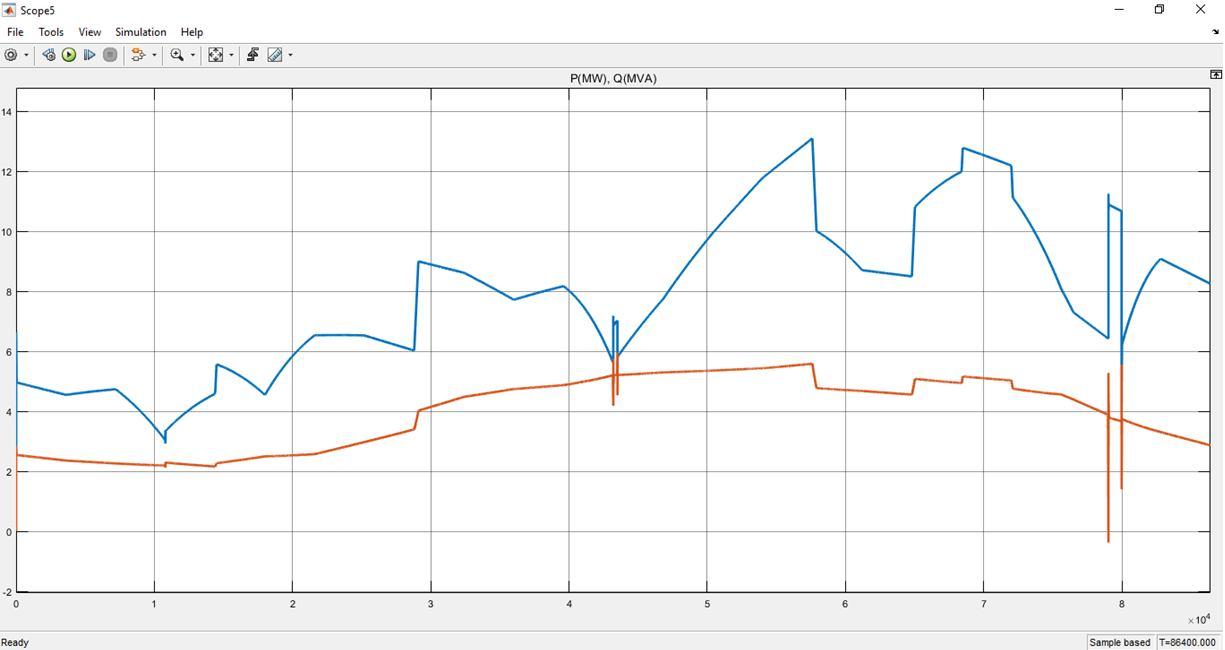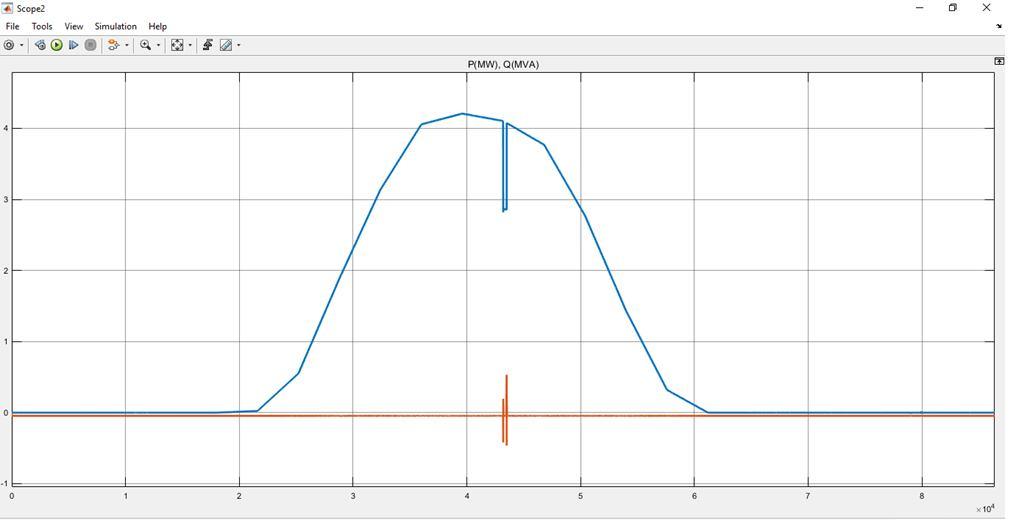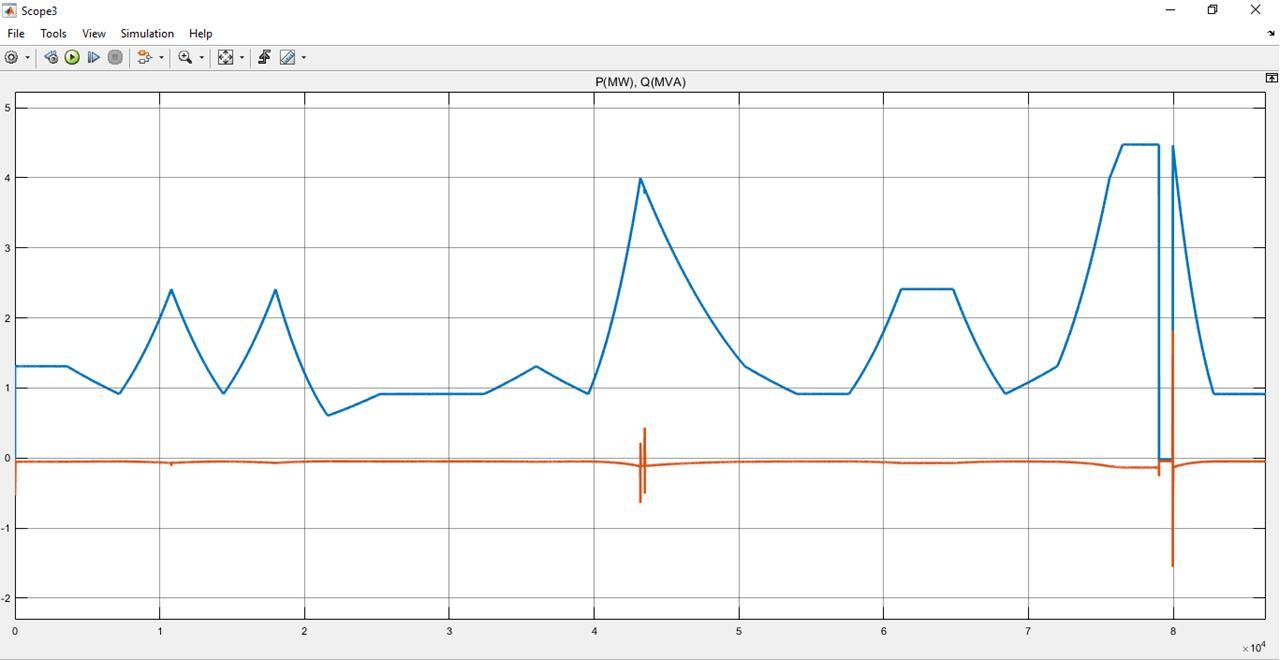
4 minute read
International Journal for Research in Applied Science & Engineering Technology (IJRASET)
from Effective Utilization of Available PEV Battery Capacity for Mitigation of Solar PV Impact
by IJRASET


Advertisement
ISSN: 2321-9653; IC Value: 45.98; SJ Impact Factor: 7.538
Volume 11 Issue III Mar 2023- Available at www.ijraset.com

ISSN: 2321-9653; IC Value: 45.98; SJ Impact Factor: 7.538

Volume 11 Issue III Mar 2023- Available at www.ijraset.com
V. CONCLUSION
This paper has developed a charging strategy, to effectively store energy in the PEV batteries taking into account the limited PEV battery capacity, for the mitigation of voltage rise and reverse power flow caused by surplus solar PV power during midday. The paper has also proposed a discharging strategy for the use of the stored energy in PEV batteries for the distribution network voltage support, especially during evening peak load period, while ensuring that there is sufficient remaining capacity in the batteries in case there is a need for travel prior to the next charging event. The proposed strategy provides the advantage of controlling the shape of the charging/discharging profile to match the general trend of solar PV power generation and peak load profile as compared to the traditional constant charging/discharging strategy. Therefore, in the midday when the PV impact is most severe, the proposed strategy can provide a better mitigation action as compared to the constant rate charging strategy. Similarly, the proposed strategy is able to provide a better voltage support during the occurrence of the maximum evening load compared to the constant rate discharging strategy. To account for the interventions in charging/discharging operation caused by any travel of the PEV, the proposed strategy adjusts the charging/discharging rates dynamically based on a reference SoC so that the limited available capacity of the PEV battery is utilized in a wise manner. Simulation results show that proposed strategy can provide better mitigation and voltage support as compared to a constant rate strategy. The simulation results also suggest that even when some PEVs in a feeder are not being plugged in at home, the remaining PEVs that are connected to the grid may still offer appreciable benefits in terms of solar PV impact mitigation and network voltage support. It is envisaged that the proposed strategy will provide some economic benefits, such as reducing the evening peak load and mitigating the PV impacts using synergetic PEV batteries. However, its financial implications need to be assessed based on the potential energy loss in the charging and discharging of the PEV batteries, its impact on the PEV battery’s life-cycle, and the potential impact that electricity tariff can cause on the proposed strategy.
References
[1] O. Erdinc, N. G. Paterakis, T. D. P. Mendes, A. G. Bakirtzis, and J. P. S. Catalao, “Smart household operation considering bi-directional EV and ESS utilization by real-time pricing-based DR,” IEEE Trans. Smart Grid, vol. 6, no. 3, pp. 1281–1291, May 2015.
[2] J. M. Foster, G. Trevino, M. Kuss, and M. C. Caramanis, “Plug-in electric vehicle and voltage support for distributed solar: Theory and application,” IEEE Syst. J., vol. 7, no. 4, pp. 881–888, Dec. 2013.
[3] L. Igualada, C. Corchero, M. Cruz-Zambrano, and F.-J. Heredia, “Optimal energy management for a residential microgrid including a vehicle-to-grid system,” IEEE Trans. Smart Grid, vol. 5, no. 4, pp. 2163–2172, Jul. 2014.
[4] J. Lassila, J. Haakana, V. Tikka, and J. Partanen, “Methodology to analyze the economic effects of electric cars as energy storages,” IEEE Trans. Smart Grid, vol. 3, no. 1, pp. 506–516, Mar. 2012.
[5] C. Pang, P. Dutta, and M. Kezunovic, “BEVs/PHEVs as dispersed energy storage for V2B uses in the smart grid,” IEEE Trans. Smart Grid, vol. 3, no. 1, pp. 473–482, Mar. 2012.
[6] A. Y. Saber and G. K. Venayagamoorthy, “Plug-in vehicles and renewable energy sources for cost and emission reductions,” IEEE Trans. Ind. Electron., vol. 58, no. 4, pp. 1229–1238, Apr. 2011.
[7] M. Singh, P. Kumar, and I. Kar, “A multi charging station for electric vehicles and its utilization for load management and the grid support,” IEEE Trans. Smart Grid, vol. 4, no. 2, pp. 1026–1037, Jun. 2013.
[8] D. P. Tuttle and R. Baldick, “The evolution of plug-in electric vehiclegrid interactions,” IEEE Trans. Smart Grid, vol. 3, no. 1, pp. 500–505, Mar. 2012.
[9] M. Yilmaz and P. T. Krein, “Review of the impact of vehicle-to-grid technologies on distribution systems and utility interfaces,” IEEE Trans. Power Electron., vol. 28, no. 12, pp. 5673–5689, Dec. 2013.
[10] K. Clement-Nyns, E. Haesen, and J. Driesen, “The impact of charging plug-in hybrid electric vehicles on a residential distribution grid,” IEEE Trans. Power Syst., vol. 25, no. 1, pp. 371–380, Feb. 2010.
[11] Q. Kejun, Z. Chengke, M. Allan, and Y. Yue, “Modeling of load demand due to EV battery charging in distribution systems,” IEEE Trans. Power Syst., vol. 26, no. 2, pp. 802–810, May 2011.
[12] H. Sikai and D. Infield, “The impact of domestic plug-in hybrid electric vehicles on power distribution system loads,” in Proc. Int. Conf. Power Syst. Technol. (POWERCON), Hangzhou, China, 2010, pp. 1–7.
[13] A. Canova, L. Giaccone, F. Spertino, and M. Tartaglia, “Electrical impact of photovoltaic plant in distributed network,” IEEE Trans. Ind. Appl., vol. 45, no. 1, pp. 341–347, Jan./Feb. 2009.
[14] F. Spertino, P. D. Leo, and V. Cocina, “Which are the constraints to the photovoltaic grid-parity in the main European markets?” Sol. Energy, vol. 105, pp. 390–400, Jul. 2014.
[15] R. Tonkoski, L. A. C. Lopes, and T. H. M. El-Fouly, “Coordinated active power curtailment of grid connected PV inverters for overvoltage prevention,” IEEE Trans. Sustain. Energy, vol. 2, no. 2, pp. 139–147, Apr. 2011.
[16] E. Demirok et al., “Local reactive power control methods for overvoltage prevention of distributed solar inverters in low-voltage grids,” IEEE J. Photovolt., vol. 1, no. 2, pp. 174–182, Oct. 2011.
[17] J. Tomi´c and W. Kempton, “Using fleets of electric-drive vehicles for grid support,” J. Power Sources, vol. 168, pp. 459–468, Jun. 2007.
[18] W. Di, D. C. Aliprantis, and K. Gkritza, “Electric energy and power consumption by light-duty plug-in electric vehicles,” IEEE Trans. Power Syst., vol. 26, no. 2, pp. 738–746, May 2011.
[19] J. R. Aguero et al., “Integration of plug-in electric vehicles and distributed energy resources on power distribution systems,” in Proc. IEEE Int. Elect. Vehicle Conf. (IEVC), Greenville, SC, USA, 2012, pp. 1–7.


